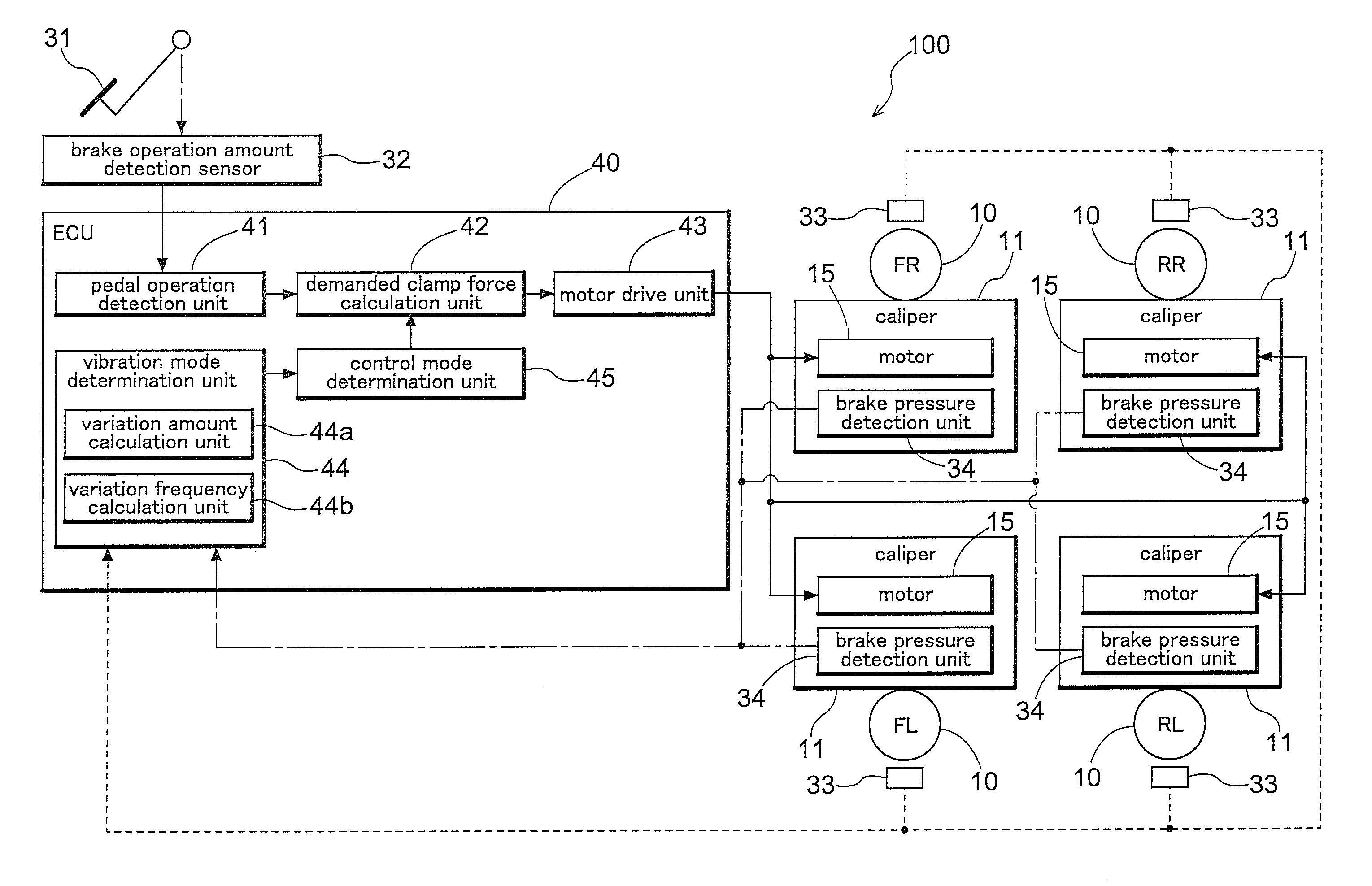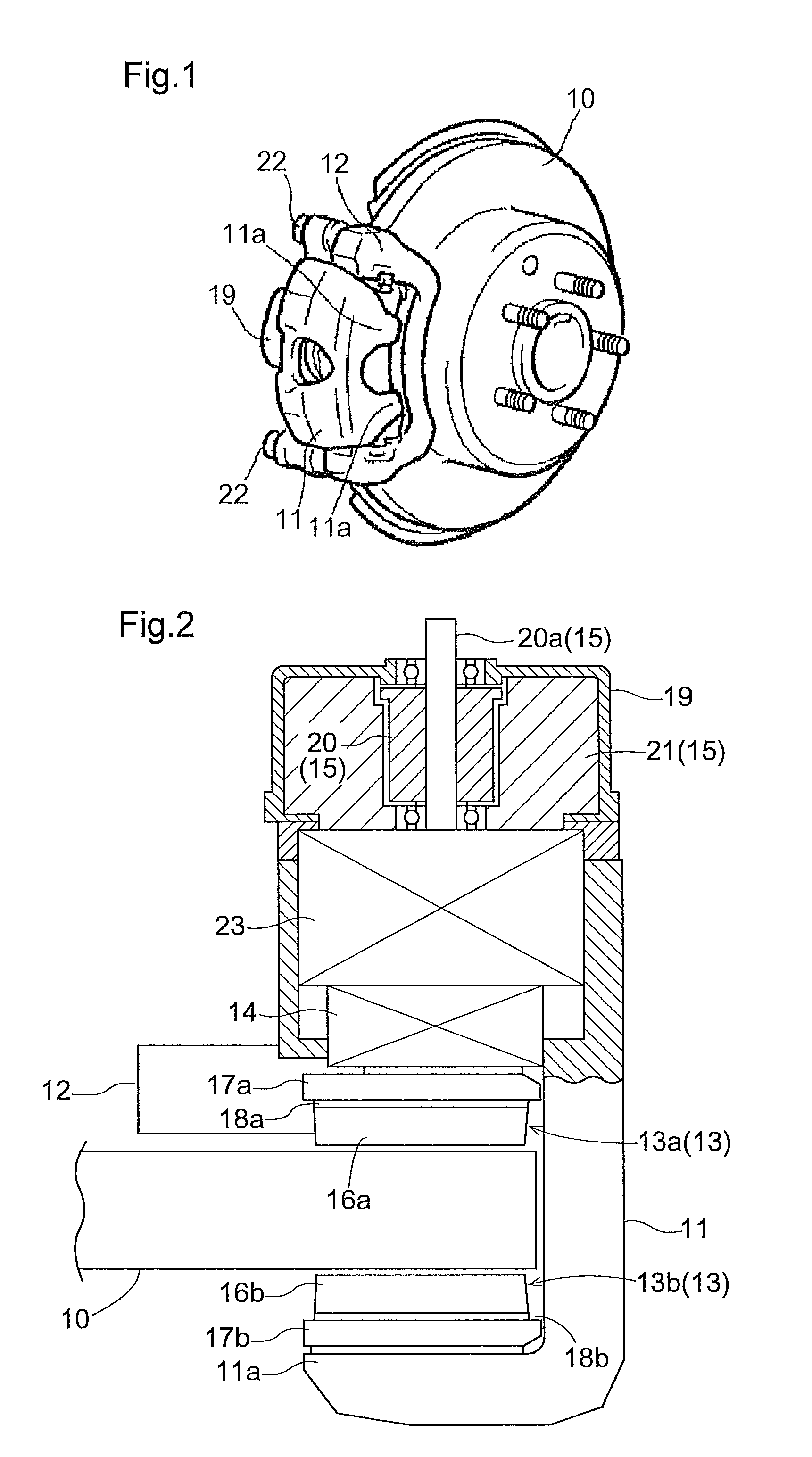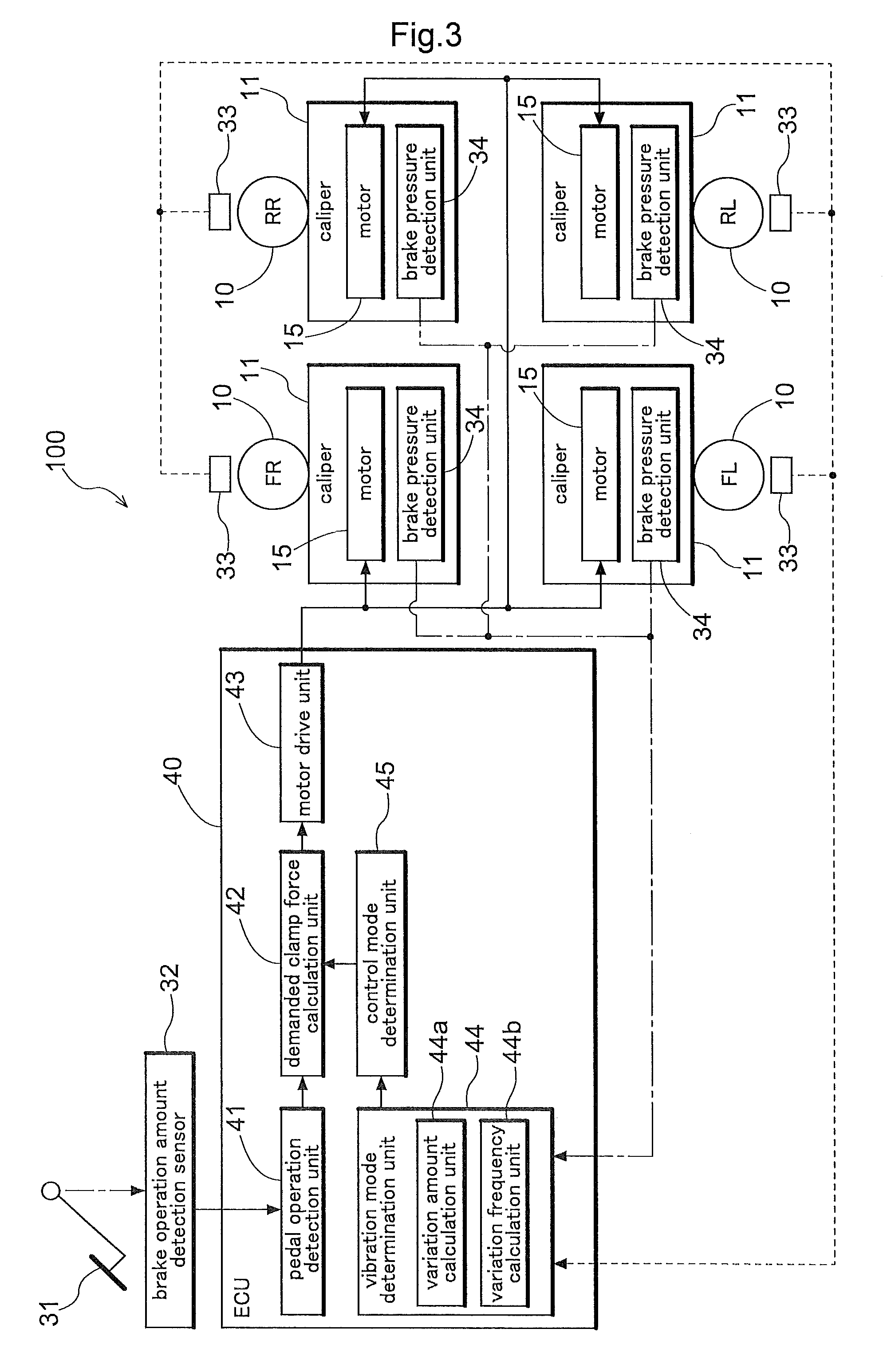Vehicle brake apparatus
a technology for brakes and vehicles, applied in brake systems, brake discs, transportation and packaging, etc., can solve problems such as vibration (abnormal vibration) of vehicles, and achieve the effect of restricting the power consumption of driving the motor and the wear of the motor
- Summary
- Abstract
- Description
- Claims
- Application Information
AI Technical Summary
Benefits of technology
Problems solved by technology
Method used
Image
Examples
Embodiment Construction
[0035]Next, an embodiment of the present invention will be described with reference to the accompanying drawings. A vehicle brake apparatus 100 relating to the present invention has functions of preventing abnormal vibration due to thickness variations in a disc rotor 10 and reducing thickness variation. FIG. 1 shows the disc rotor 10 and a caliper 11 of the vehicle brake apparatus 100 (see FIG. 3). The disc rotor 10 is mounted to be rotatable in unison with a wheel (not shown) provided in the vehicle. Therefore, there exists one-to-one relationship between the rotational speed of the disc rotor 10 and the rotational speed of the wheel, and detection of either one rotational speed allows specification (identification) of the other rotational speed. In the instant embodiment, detection of the rotational speed of the disc rotor 10 is effected by a wheel speed sensor 33 to be described later.
[0036]The caliper 11 is fixed to a fixing member 12 of the vehicle and a brake pad 13 is mounte...
PUM
 Login to View More
Login to View More Abstract
Description
Claims
Application Information
 Login to View More
Login to View More - R&D
- Intellectual Property
- Life Sciences
- Materials
- Tech Scout
- Unparalleled Data Quality
- Higher Quality Content
- 60% Fewer Hallucinations
Browse by: Latest US Patents, China's latest patents, Technical Efficacy Thesaurus, Application Domain, Technology Topic, Popular Technical Reports.
© 2025 PatSnap. All rights reserved.Legal|Privacy policy|Modern Slavery Act Transparency Statement|Sitemap|About US| Contact US: help@patsnap.com



